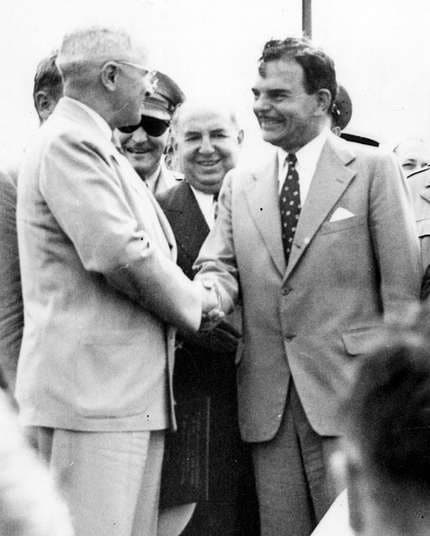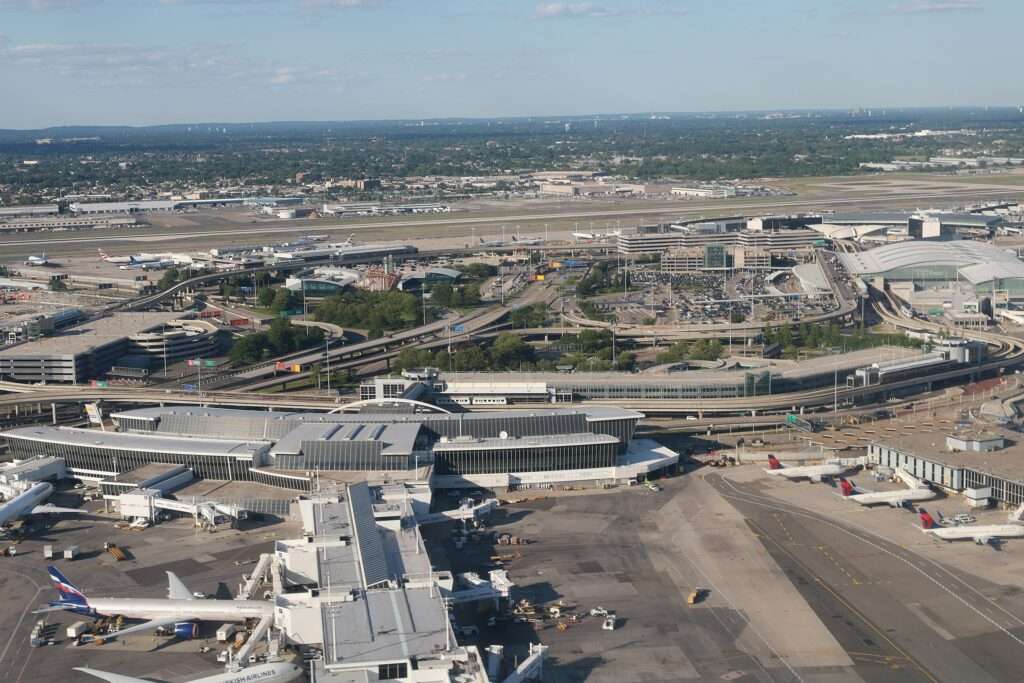New York JFK International Airport is a global icon, a bustling crossroads for millions of travelers.
However, its story stretches back further than the sleek terminals and roaring jets.
JFK‘s history is a captivating tale of innovation, transformation, and the ever-evolving world of air travel.
The Birth of Idlewild: Replacing a Crowded Legacy (1940s)

In the 1930s, New York City’s LaGuardia Airport, opened in 1939, quickly became overwhelmed by burgeoning air traffic.
Recognizing the need for a new, larger facility, city officials set their sights on a vast tract of marshland in Queens, encompassing the Idlewild Beach Golf Course.
Construction began in 1943, and on July 1, 1948, Idlewild Airport officially opened its doors.
President Harry S. Truman himself graced the grand opening ceremony, signifying the national importance placed on this new aviation hub.
The Jet Age Dawns: Idlewild Takes Flight (1950s-1960s)
Idlewild ushered in a new era of air travel.
The 1950s witnessed the dawn of the jet age, and Idlewild became a key player.
Pan American World Airways (Pan Am), a major international carrier, established its primary hub at Idlewild, becoming synonymous with glamorous transatlantic travel.
Other major airlines like Eastern, National, and TWA followed suit, transforming Idlewild into a bustling international gateway.
The airport witnessed a surge in passenger traffic, handling over 2 million passengers by 1957.
Expansion and Transformation: Meeting the Demands of a Growing World (1960s-1970s)
The 1960s and 1970s were a period of significant expansion and transformation for Idlewild.
New terminals were constructed to accommodate the increasing number of passengers and airlines.
The iconic TWA Flight Center, designed by Eero Saarinen and resembling a giant bird in flight, became a symbol of the jet age and a landmark of modern architecture.
Technological advancements like jet bridges and baggage carousels were implemented, streamlining the passenger experience.
A Name Change and a Legacy Honored: The Birth of New York JFK International Airport (1963-Present)

The year 1963 marked a pivotal moment in Idlewild’s history.
Following the assassination of President John F. Kennedy, the U.S. Senate passed a resolution renaming the airport John F. Kennedy International Airport in his honor.
This renaming not only commemorated a national tragedy but also reflected the airport’s growing status as a global symbol of American aviation.
Challenges and Modernization: Navigating a Turbulent Industry (1970s-Present)
The 1970s saw a period of economic stagnation and deregulation in the airline industry, which impacted JFK.
Competition intensified, leading to consolidation and the demise of some major carriers housed at JFK, like Eastern and Pan Am.
However, JFK remained a major hub for other airlines like American, Delta, and TWA.
The following decades brought both challenges and advancements.
Security concerns heightened after the 9/11 attacks, leading to stricter regulations and infrastructure upgrades.
A Gateway to the 21st Century: Sustainability and Global Connectivity (Present Day)

Today, JFK International Airport is a modern transportation hub serving over 210 destinations worldwide.
It remains a major economic engine for New York, employing over 100,000 people directly and indirectly.
JFK prioritizes sustainability initiatives, utilizing renewable energy sources and implementing green building practices.
Expansion plans are underway, with a focus on modernizing terminals, improving passenger flow, and increasing capacity.
Beyond the Takeoffs and Landings: A Cultural Touchstone
New York JFK’s impact extends far beyond the realm of air travel.
The airport has been featured in countless films and television shows, solidifying its place in popular culture.
The iconic TWA Flight Center, now a TWA Hotel, continues to be a tourist attraction and a symbol of the airport’s rich history.
New York JFK International Airport’s story is one of constant evolution.
From its humble beginnings as Idlewild to its current status as a global aviation hub, JFK has witnessed the transformation of air travel.
As technology continues to advance and the world becomes more interconnected, JFK is poised to remain a vital international gateway, carrying the legacy of innovation and service into the future.

Click the banner to subscribe to our weekly newsleter.

Click the photo to join our WhatsApp channel so then you can stay up to date with everything going on in the aviation industry!









